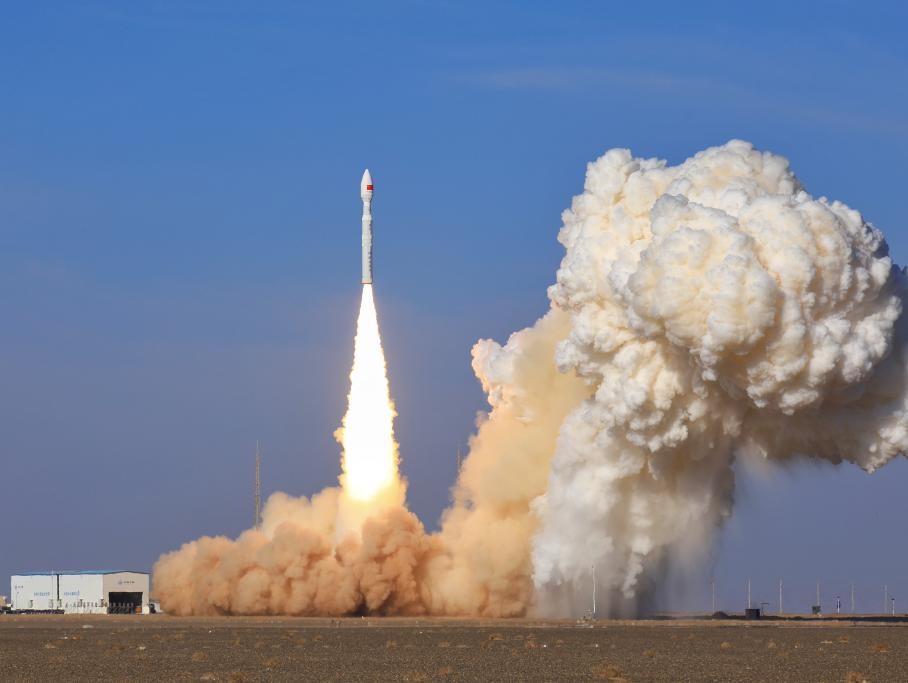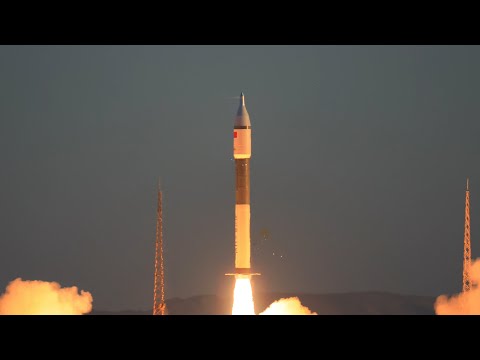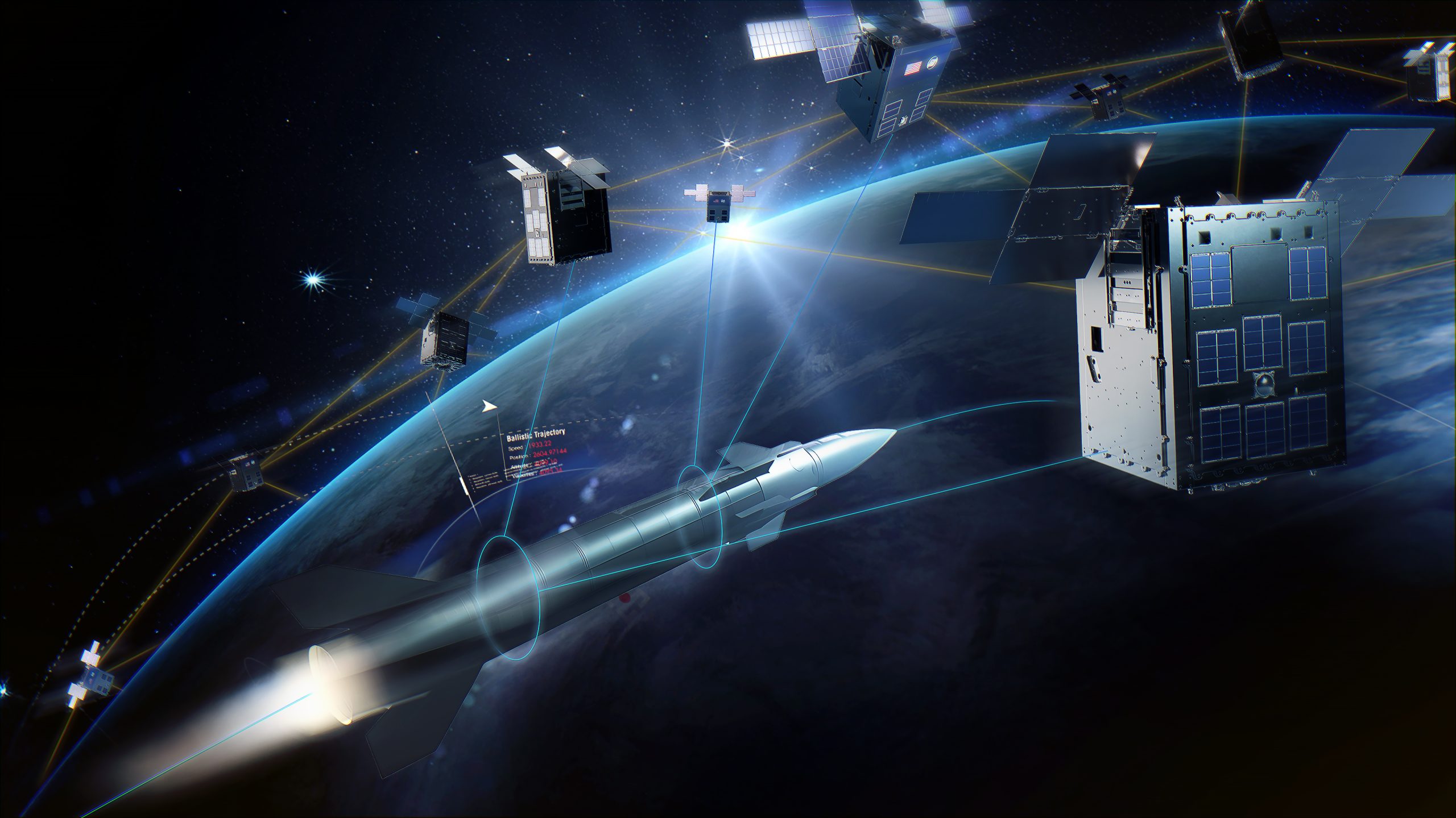Now Reading: China launches TJS-21 towards Molniya orbit, lofts trio of Shijian-30 spacecraft
-
01
China launches TJS-21 towards Molniya orbit, lofts trio of Shijian-30 spacecraft
China launches TJS-21 towards Molniya orbit, lofts trio of Shijian-30 spacecraft


HELSINKI — China conducted a pair of launches last week, adding new spacecraft to its opaque TJS and Shijian satellite series.
A Long March 2C rocket lifted off at 11:01 p.m. Eastern Nov. 18 (0401 UTC, Nov. 19) from Jiuquan Satellite Launch Center in the Gobi Desert, northwest China. The China Aerospace Science and Technology Corporation (CASC) announced launch success, revealing the previously undisclosed payloads to the Shijian-30 A, B and C satellites.
The satellites will be mainly used for space environment exploration and related technology verification, according to CASC, a terse description repeated across official reports.
The satellites were later cataloged by U.S. Space Force space domain awareness in 511 by 528-kilometer orbits with an inclination of around 52 degrees.
Shijian is a series of satellites used to conduct experiments, test new technologies and verify operational practices on orbit. While the Shijian series spans diverse missions, the Shijian-30 triplet initially appears similar to earlier multi-satellite deployments focused on formation flying and broad “space environment” characterization.
Shijian-25, launched in January, tested on-orbit refueling and mission extension technologies with Shijian-21, which itself launched in 2021 and towed a defunct Beidou satellite into a graveyard orbit. Other notable missions include the retrievable Shijian-19 science satellite, the 8,000-kilogram Shijian-20, and Shijian-17, which demonstrated maneuverability around the geostationary belt and conducted proximity operations.
TJS-21 launch
The Shijian-30 mission was followed shortly after by a launch from southwest China. A Long March 3B rocket lifted off at 5:55 a.m. Eastern (1055 UTC) Nov. 21 from Xichang Satellite Launch Center in Sichuan. CASC announced launch success, carrying the Tongxin Jishu Shiyan-21 (TJS-21) satellite.
The satellite is “primarily used for satellite communication, broadcasting, data transmission, and related technology testing and verification,” according to CASC.
TJS-21 was later tracked in a 212 by 40,090-kilometer transfer orbit with an inclination of 51 degrees. The high inclination suggests that, instead of being sent to the geostationary belt above the equator, as with most TJS satellites, the spacecraft will enter a Molniya-like orbit.
The launch follows a similar profile to the TJS-13 satellite, launched in December 2024, which later ended up in a highly elliptical, Molniya-like orbit with an inclination of 63 degrees. The highly elliptical nature of Molniya orbits means spacecraft spend most of their roughly 12-hour orbital period visible over the northern hemisphere. These orbits are used for communications, remote sensing or missile early warning systems, climate and weather monitoring and other purposes such as signals intelligence.
China earlier launched the Shiyan-10 (01) and (02) satellites in 2021 and 2022 respectively, marking the country’s first forays into Molniya orbits. The experimental Shiyan series is often used for early-stage and tech demo missions, whereas the TJS series satellites likely represent the operational satellites for the desired purposes.
The TJS series mainly operates in geostationary orbit (GEO). It is seen by Western analysts as potentially carrying out classified missions including signals intelligence, early warning missions and satellite inspection activities to support the People’s Liberation Army (PLA).
Launch record, Shenzhou-22 set to launch uncrewed
The launches were China’s 73rd and 74th orbital launch attempts of 2025, extending a new Chinese record for launches in a calendar year.
China’s next mission is set to be the launch of the Shenzhou-22 spacecraft around 11:10 p.m. Eastern, Nov. 24 (0410 UTC, Nov. 25). The spacecraft will, exceptionally, be uncrewed, instead heading to Tiangong space station to provide a lifeboat for the Shenzhou-21 crew, who saw their own spacecraft used by the departing Shenzhou-20 astronauts after their spacecraft was suspected to have been impacted by debris.
Shenzhou-22 will carry cargo to Tiangong and will be the first uncrewed Shenzhou spacecraft launch since Shenzhou-8 in 2011, which performed docking tests with the small Tiangong-1 experimental space lab and a precursor to the Tiangong space station.
Stay Informed With the Latest & Most Important News
Previous Post
Next Post
-
 012024 in Review: Highlights from NASA in Silicon Valley
012024 in Review: Highlights from NASA in Silicon Valley -
 02Panasonic Leica Summilux DG 15mm f/1.7 ASPH review
02Panasonic Leica Summilux DG 15mm f/1.7 ASPH review -
 03From Polymerization-Enabled Folding and Assembly to Chemical Evolution: Key Processes for Emergence of Functional Polymers in the Origin of Life
03From Polymerization-Enabled Folding and Assembly to Chemical Evolution: Key Processes for Emergence of Functional Polymers in the Origin of Life -
 04How New NASA, India Earth Satellite NISAR Will See Earth
04How New NASA, India Earth Satellite NISAR Will See Earth -
 05And Thus Begins A New Year For Life On Earth
05And Thus Begins A New Year For Life On Earth -
 06Astronomy Activation Ambassadors: A New Era
06Astronomy Activation Ambassadors: A New Era -
07SpaceX launch surge helps set new global launch record in 2024




















